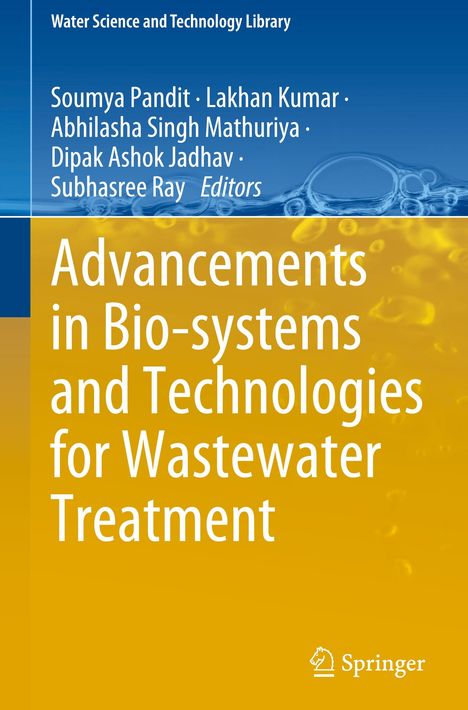Advancements in Bio-systems and Technologies for Wastewater Treatment, Gebunden
Advancements in Bio-systems and Technologies for Wastewater Treatment
(soweit verfügbar beim Lieferanten)
- Herausgeber:
- Soumya Pandit, Lakhan Kumar, Subhasree Ray, Dipak Ashok Jadhav, Abhilasha Singh Mathuriya
- Verlag:
- Springer International Publishing, 07/2024
- Einband:
- Gebunden, HC runder Rücken kaschiert
- Sprache:
- Englisch
- ISBN-13:
- 9783031583308
- Artikelnummer:
- 11932644
- Umfang:
- 344 Seiten
- Nummer der Auflage:
- 2024
- Ausgabe:
- 2024
- Gewicht:
- 744 g
- Maße:
- 241 x 160 mm
- Stärke:
- 23 mm
- Erscheinungstermin:
- 31.7.2024
- Hinweis
-
Achtung: Artikel ist nicht in deutscher Sprache!
Klappentext
This book explains the main problems of industrial wastewater treatments and how they are being treated by innovative biological processes. The need for clean water in developing countries has become difficult to achieve as a result of globalization and industrialization and because of an increase in population, urbanization, and per capita water use.
Residential, commercial, industrial, and educational institutions produce immense amounts of wastewater. Wastewater is treated to extract toxins to produce processed effluent by physical, chemical, and biological processes. Most of these innovative treatment systems are membrane filtration, advanced oxidation processes, and electrochemical approaches, which are strongly committed to offering solutions to help protect public health and the environment.
For wastewater treatment, different forms of bioreactors are used which are reliable, cost-efficient, and effective in removing a wide variety of contaminants.
This book outlines the capacity of various bioreactors that are most widely used for the treatment of different industrial and domestic wastewater, such as a rotating biological contactor, biological fluidized bed reactor, packed bed reactor, membrane bioreactor, continuous stirred tank bioreactor, up-flow anaerobic sludge blanket reactor, and photobioreactor, etc.
Despite this, the acceptance of these technologies and their commercialization on an industrial scale, the performance is still limited. Therefore, a broader use of cost-effective in situ remedial approaches to natural phenomena like bioremediation is needed. The role of numerous bioreactors in industrial effluent treatment has, including recent developments, also been explored in depth. Furthermore, it includes the operational factors affecting their performances, advances in their architectural design, their amalgamation with the existing setup, scale-up studies, life cycle assessment of those reactors, materials and cost analysis, etc. This information helps the reader to understand the insight into the mechanism, pros and cons, moreover efficient utilization, and commissioning of bioreactors.


